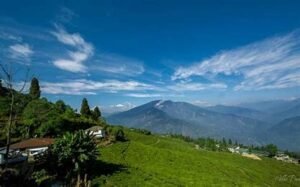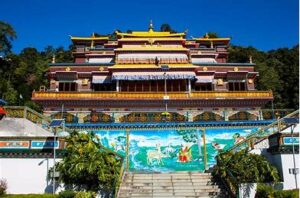Yaoshang is one of Manipur’s most cherished festivals, celebrated with enthusiasm and cultural richness. Often referred to as Manipur’s version of Holi, Yaoshang is more than just a festival of colors. It beautifully intertwines tradition, sports, dance, and communal harmony, showcasing the vibrant heritage of the state. Spanning five days, Yaoshang marks the onset of spring and brings communities together in celebration.
Historical Roots
Yaoshang traces its roots to ancient customs and beliefs practiced by the Meitei community of Manipur. Although it coincides with the Hindu festival of Holi, Yaoshang has distinct cultural and religious significance rooted in indigenous traditions. It is believed to have originated from the worship of Panthoibi, a goddess revered by the Meitei people.
The festival’s origin also reflects the syncretic blend of indigenous and Vaishnavite traditions, which became prominent after the 18th-century conversion of Meitei rulers to Vaishnavism. Over time, Yaoshang evolved to incorporate elements of both indigenous practices and mainstream Holi celebrations.
Language and Communication
During Yaoshang, the people of Manipur, especially the Meitei community, engage in various cultural expressions. Manipuri, the official language of Manipur, becomes the primary medium for songs, prayers, and storytelling. Folk songs known as ‘Khongjom Parva’ are sung, narrating tales of valor, devotion, and historical events.
Cultural performances, announcements, and even friendly interactions are steeped in traditional phrases and terminologies that reflect the community’s linguistic heritage.
Festivals and Celebrations
Yaoshang is a five-day festival beginning with the burning of the Yaoshang hut, a symbolic thatched hut made of straw and bamboo. This ritual signifies the purging of negativity and the welcoming of positive energy and prosperity.
Children and young people take part in ‘Nakatheng,’ a tradition where groups go door-to-door collecting money to fund sports and cultural activities. Unlike Holi, which primarily involves the playing of colors, Yaoshang also emphasizes sporting events and traditional dances.
Arts, Crafts, and Music
The festival showcases the region’s rich art and craft heritage. Handwoven fabrics, especially the Phanek and Innaphi, are worn with pride during the festivities. Artisans also display their skills through decorative pieces used during the celebration.
Music plays an integral role in Yaoshang. Traditional instruments such as the Pena, a stringed instrument, are played during dances and songs. The festival is also a time for cultural performances like Thabal Chongba, a traditional Manipuri dance performed in circles, often accompanied by folk music.
Cuisine and Culinary Traditions
Food is an essential part of Yaoshang. Special dishes are prepared to mark the occasion, including Eromba, a spicy dish made of boiled vegetables and fish, and Singju, a unique salad made with seasonal herbs, vegetables, and fermented fish.
The preparation and sharing of food strengthen communal bonds and reflect the cultural importance of hospitality.
Attire and Ornamentation
Traditional attire is worn during the festival, showcasing the unique textile heritage of Manipur. Women wear elegant Phaneks paired with Innaphi, while men often dress in traditional dhotis and turbans.
Ornamentation also plays a role, especially during cultural performances where dancers adorn themselves with intricate jewelry and accessories.
Beliefs and Values
Yaoshang embodies the community’s values of unity, resilience, and respect for traditions. It signifies the harmonious coexistence of indigenous beliefs and Vaishnavite practices, creating a unique cultural identity for the Meitei people.
The festival also promotes the value of healthy competition through sports events organized for children and youth.
Customs and Etiquette
Respect and hospitality are core elements of Yaoshang. Elders are revered, and guests are treated with warmth and kindness. The festival emphasizes community participation, with everyone contributing to the various activities organized throughout the celebration.
Architecture and Symbols
The burning of the Yaoshang hut is a symbolic ritual that reflects the cultural significance of purification and renewal. Temporary structures and decorations are also crafted to enhance the festive atmosphere.
Oral Traditions and Storytelling
Storytelling remains a cherished part of Yaoshang. Elders share tales of historical events, legends, and moral stories with the younger generation, ensuring the transmission of cultural knowledge.
Interactions with Nature
Yaoshang often involves outdoor activities and games, fostering a deep connection with nature. Traditional sports like Mukna (a form of wrestling) and Sagol Kangjei (an early form of polo) are popular during the festival.
Challenges and Preservation
Modernization and external influences pose challenges to preserving the original essence of Yaoshang. Efforts are being made by cultural organizations to maintain traditional practices and promote awareness among the younger generation.
Contributions to the Broader Region and World
Yaoshang contributes significantly to the cultural diversity of Northeast India. Its unique blend of sports, dance, and rituals has attracted researchers and cultural enthusiasts worldwide. The traditional Manipuri dance form Thabal Chongba, in particular, has gained recognition beyond the region.
Connection to Northeast India
Yaoshang is an integral part of the cultural fabric of Northeast India. Its influence is seen in various festivals celebrated across the region that emphasize community participation, sports, and traditional art forms.
Conclusion
Yaoshang is more than just a festival; it is a celebration of heritage, unity, and resilience. As modernization continues to shape cultural practices, it is essential to preserve the essence of Yaoshang for future generations. Understanding and appreciating festivals like Yaoshang not only strengthens community bonds but also promotes cultural diversity and respect.
Let us cherish and protect this beautiful tradition, ensuring it continues to thrive as a testament to Manipur’s rich cultural legacy.




